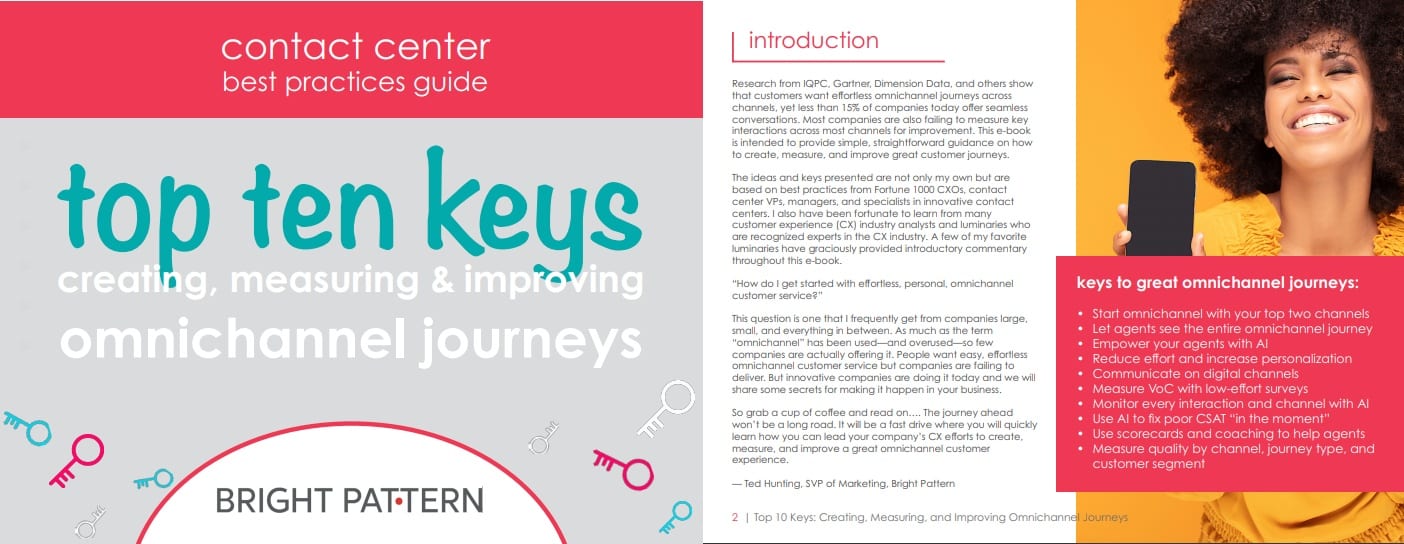Through this blog series we have looked at why it is important to see the journey at the individual’s level—the micro level—by agents or employees and also how important it is to see the journey at the business level—the macro level. By understanding how journeys look from this vantage point, you can modify your business rules to be nimble and agile in order to offer great customer service.
Imagine, at the end of each customer’s journey, adding a simple CSAT or NPS-type survey rating on a scale of 1–5. Now imagine you can filter by journeys ranking a 1 or by positive sentiment and see what channels were traversed, what agents were involved, and what types of issues were involved. By filtering journeys at the macro level, you can see the CSAT, NPS, or  Sentiment by Journey Type (e.g., a purchasing journey or service journey), Channel, Customer Segment, or even Agent Pool (e.g., the Omaha Center team versus the Dublin Center team).
Sentiment by Journey Type (e.g., a purchasing journey or service journey), Channel, Customer Segment, or even Agent Pool (e.g., the Omaha Center team versus the Dublin Center team).
 Some examples of this are shown. The first quality management wallboard shows interaction quantity and percentage mix by channel. CSAT or NPS via simple surveys is shown by the colored gauge and sentiment collected via AI is shown by the icon in the center of each dial. A similar wallboard showing the same metrics by Journey Type is shown in the second example.
Some examples of this are shown. The first quality management wallboard shows interaction quantity and percentage mix by channel. CSAT or NPS via simple surveys is shown by the colored gauge and sentiment collected via AI is shown by the icon in the center of each dial. A similar wallboard showing the same metrics by Journey Type is shown in the second example.
So by now you have heard the 10 keys, but how do you get started turning all the keys?
Turning all the keys together requires a platform approach to omnichannel conversations and omnichannel quality assurance—whether you build it yourself, or, better yet, turn it on in the cloud. Think of this as your master key to unlock all the others to make truly effortless, personal omnichannel conversations and quality assurance possible.
If you want to unify and break down silos in your channels to create effortless, personal, omnichannel customer experiences, you either need to build or buy an omnichannel orchestration platform. Most companies have tried to build it or bolt it on to existing systems. Large enterprises have spent billions and years and still have not succeeded, which is why just 5–20% of enterprises have adopted omnichannel, and high-effort and impersonal customer service remains the norm. Other companies have failed because they have looked to legacy vendors that designed their hardware or on-premises software 20+ years ago.
These legacy systems literally took years to implement and were exorbitantly expensive, only available to the largest multi-billion-dollar enterprises, and were very expensive to change with professional services. They leave customers in silos with traditional channels, unprepared to deal with new emerging channels.
 By using a platform approach where all channels are native to the platform (versus bolt-on solutions), you can turn on seamless omnichannel conversations and also measure the quality of every single interaction on every channel. A platform with all channels native makes it easy to realize every key outlined in this e-book.
By using a platform approach where all channels are native to the platform (versus bolt-on solutions), you can turn on seamless omnichannel conversations and also measure the quality of every single interaction on every channel. A platform with all channels native makes it easy to realize every key outlined in this e-book.
With new cloud microservices, it is now possible to turn on true omnichannel conversations for companies of any size, from midsize companies to the largest enterprises, in a matter of just weeks or months. Bright Pattern is the first built-for-cloud contact center solution offering all channels—from traditional inbound/outbound/blended voice to newer channels like bot- and video/VoIP-enriched live chats and social messengers—natively and seamlessly connected. With Bright Pattern, you can offer your customers easy, personal omnichannel conversations and also measure and improve every customer interaction and journey.
About the author:
Previously Ted worked at Genesys where he led North America Marketing with over 15 years in the customer experience industry. Prior to that Ted worked for startups and enterprise software and hardware companies in all marketing functions. In addition to his CX experience, Ted has a background in business intelligence and large scale computing systems. Ted is a graduate of the Ross School of Business at the University of Michigan with a marketing and finance background.




